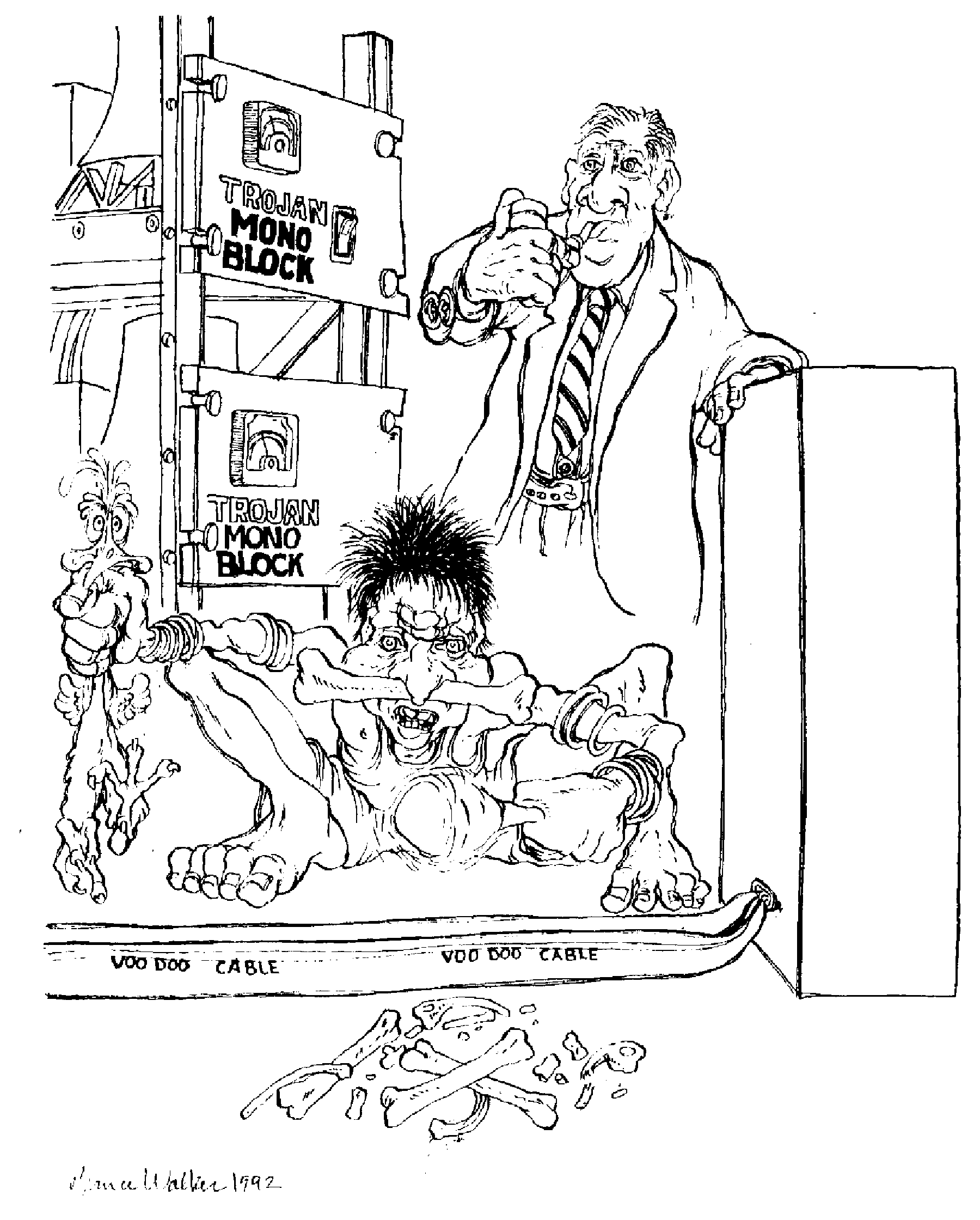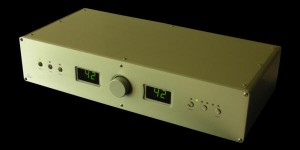Roger Skoff writes about the best way to approach improving your system
Just in case you'd forgotten, Roger Skoff is the former Owner/Designer of XLO Cables, and currently occupies the same position with his new company, RSX Technologies.

Just about everybody knows the old saying about a chain being no stronger than its weakest link. That's certainly true and, because our systems are made up of many different things that, one after another, pass and affect the sound we hear when we listen to them, it's easy to compare a HiFi system to a chain and to assume that the old saying applies.
The problem with doing that is that—as hobbyists and presumed seekers of as close to sonic or musical perfection as we can get—it can lead us to a focus on improving the weakest link without ever recognizing or trying to optimize what we have in the stronger ones.
Reproducing music at home, regardless of the specifics of the system, always requires at least several things: a recording or live sound source; a device, if it's a recording, to play it (a record or CD player, a radio, a streaming device, or whatever); amplification and control electronics (typically a preamp and amplifier), speakers (unless you're using headphones); cables to allow signal to pass from one component the next throughout the system; and (again, unless you're using headphones), a room to listen in. Each and every one of those things can, to a greater or lesser degree, influence what you hear, and may, therefore, constitute the "weak link" in your system.
If you just concentrate on that, it can easily become an endless quest. No matter what you do or how much you spend, something will always be the weakest link in your listening chain; there will always be the possibility of improvement; and perfection will always elude you.
As a hobbyist, that may be just fine: A good hobby must always be able to take as much (or as little) time, money, effort, and involvement as you're willing to commit to it. Most importantly, it must never be finished—there must always be another game to play, another thing to buy, or something else to do—or you'll have to go find another hobby.
If, however, endless striving isn't your thing, or if you're willing or able to set a more finite goal—either the very best you can do within a set budget, for example, or simply musical reproduction sufficient to satisfy you at whatever level you desire—a different way of looking at things may be in order. Try considering your system not as analogous to a chain, but to an egg-sorting device.
Eggs are sorted by a machine with a series of holes of different sizes, ranging from just less than the required diameter for an egg to be classified as "jumbo" (the largest) to just smaller than is needed for "large," then to just under the size for medium, and down to the smallest size commercially acceptable. To use it, eggs are placed into the machine and passed, first through the largest hole, where its just-too-small size stops the "jumbos" and holds them for packaging. All of the rest then go on to the next hole, which stops the "large" eggs and passes the others, and so on. This continues through the entire desired range until all of the eggs have been sorted.
Sounds reasonable, doesn't it? But what would happen if the same eggs were used, and the same sorting holes, but the holes were arrayed in a different sequence?
If the smallest hole (let's call it the equivalent to the weakest link of a chain) were to be placed anywhere other than last in the sorting sequence, it would stop everything but the smallest eggs—the ones likely to be of least value—from that point on, and larger eggs, presumably more valuable, would never get through.
So what's the point here? Easy. If you look at your system as an egg sorter instead of a chain it does two things: First, it changes your perspective on your system. Every system has its weak point—its smallest hole—that's the nature of everything. But if you'll remember that everything before that smallest hole gets through, you can concentrate on what's good or potentially good about your system and not be frustrated by its unfixable flaws. Second, it can save you a lot of money. By understanding system limitations and concentrating on improvements within them—on improvements that are actually possible to what you have, instead of on things that, regardless of what you might spend or do, can never produce the desired results—you can maximize results and minimize cost or unproductive effort.
One perfect example to consider is bass response. Bass is generally the most difficult and expensive part of the sonic spectrum for your system to reproduce. Bass requires more amplifier power than mid-range or treble, so, if you're a fan of single triode, low output amplifiers, maybe you ought to forget it. Unless you're using BIG horn-type speakers (more money, greater enclosure size and expense) single triodes aren't going to do it. Even with adequate power (possibly more expensive in itself), bass is still bulky and expensive to achieve, and requires either or both bigger or more drivers (more expensive) or a bigger or more costly enclosure. (The Stewart Hegeman designed Shahinian Contrabombarde subwoofer, for example, which went down to well below 16Hz, used two eight inch drivers in a labyrinthine double-vented enclosure that was so complex and expensive to build that, despite the woofer's phenomenal performance, few were ever built and it was ultimately discontinued as economically infeasible.)
Even those lucky enough to own a Contrabombarde or its equivalent may never have heard the extremes of its performance. For one thing, given the limits of even today's technology, how do you record sounds below 16Hz? And even if you can, how much under 16Hz program material is there? (32Hz is generally the deepest note playable on even a large pipe organ and, other than one test disc that featured an atomic bomb blast and bragged/warned potential buyers that it contained frequencies down to 4Hz, and that playing it might damage their system, I know of nothing else that goes that deep.)
Even with extreme bass response available to you, unless your room is big enough (the room here being the "smallest hole"), you won't be able to hear it. In any room, the lowest frequency that can be propagated is limited by the longest dimension of the room and its wavelength is equal to twice that longest dimension. To find out what your room's lowest bass frequency is, just multiply the room's longest dimension (18 feet, for example) by 2 (to recognize that it's only half a wavelength) and divide it into 1120 feet per second, the nominal speed of sound in air at sea level.
In the example case, 18 x2 = 36, and 36 into 1120 = 31.1, meaning that, if your room's true longest dimension (not complicated by open doors/passages into side rooms or other things that might affect the true length of the available air column), the deepest bass frequency that that room can propagate is 31.1Hz (very nice deep bass), but that no matter what you do or how much you spend you are not going to get bass any deeper. If your room is bigger, you'll be able to go lower (28 feet for 20Hz, and 35 feet or more to get the bottom bass from your Contrabombarde), but if your room is only 15 feet in its longest dimension, as is not at all unusual, don't expect it to produce anything below 37Hz.
So what do you do to make your system better? If room size is your "smallest hole," and depth of bass can't be improved, work on something else that can! If bass is your focus, you can still work for, and get, (possibly even just by improved speaker placement or room acoustic treatment), a distinct improvement in bass definition and impact. And it may even be possible without any component replacements at all.
Certainly not all system limitations are as impossible to overcome as room size. Many times, that "smallest hole" can be improved just by spending more time, money, or effort. In either case, you'll do just fine if you'll remember these two rules:
First, if it can't be fixed, don't try to fix it. And second, if it can be fixed—by expanding your budget, for example to buy a better "weakest link" and make the "smallest hole" larger—always make sure, before you do it, that it's already doing as well as it can within its present capabilities.
Happy egg sorting.







































